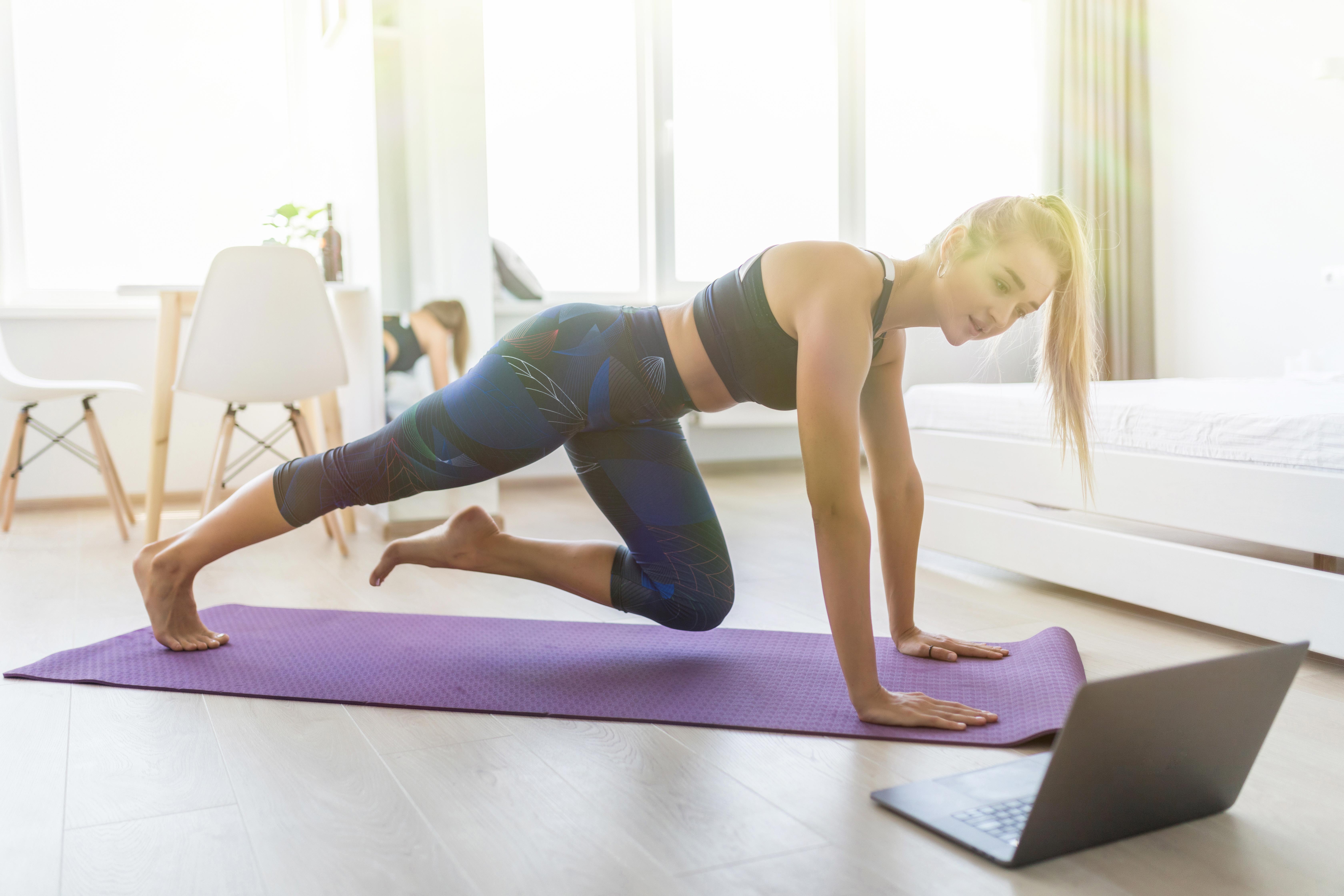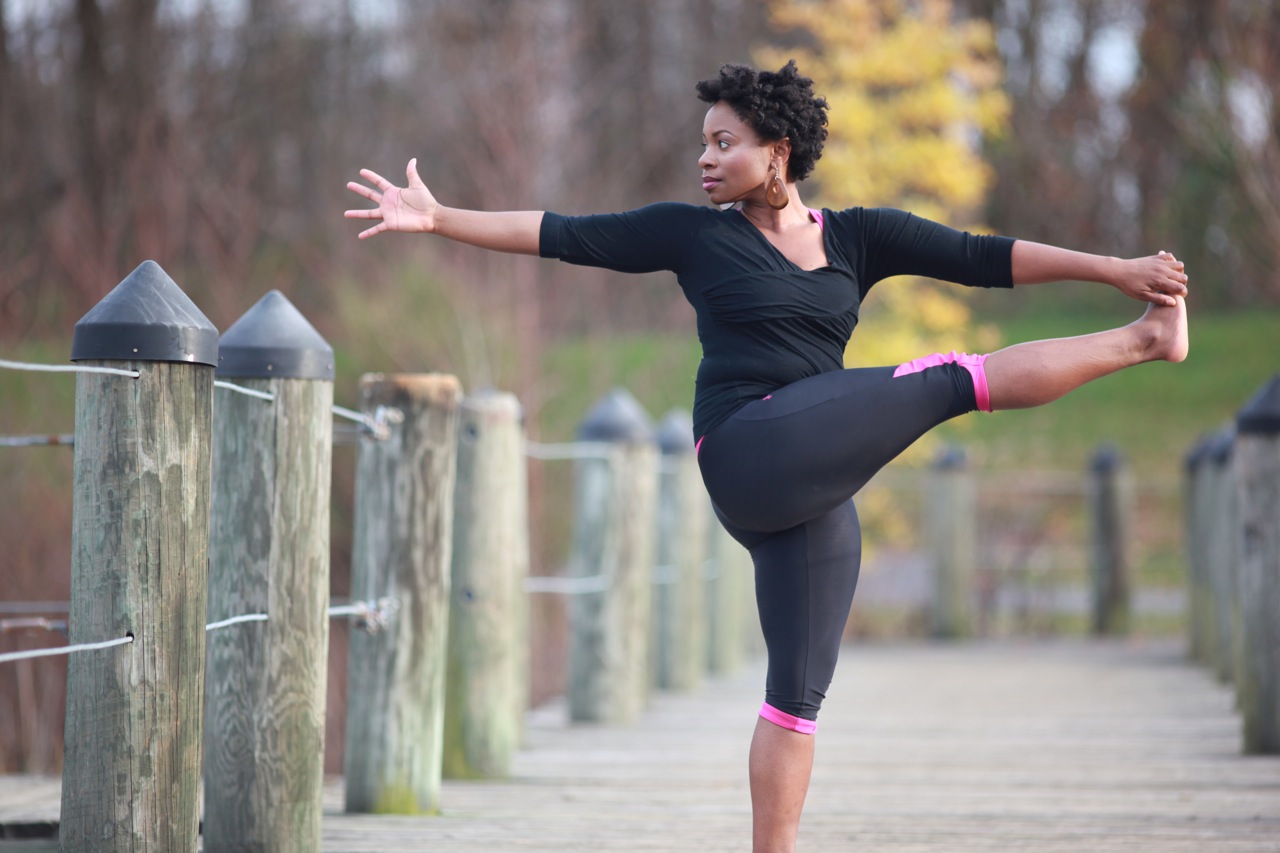Thyroid-Friendly Exercise: Top 5 Tips

Do you struggle with staying active since your thyroid issues began? Exercising with hypothyroidism or Hashimoto's comes with unique challenges and considerations. While it's crucial to our wellness to stay active and get regular physical movement, there’s a bit more to it than just getting the prescribed 30 minutes a day.
If you're a thyroid patient who wants to get the most benefit from your exercise without undermining your health goals, getting injured, or ending up in worse shape than you started off, there are a few things you need to be aware of.
In this blog post and episode of Thyroid-healthy Bites, we're going to cover the basics of thyroid-friendly exercise, including the Top 5 Expert Tips for Thyroid-friendly Exercise. This applies to you whether you’ve been diagnosed with hypothyroidism, Hashimoto’s, or Graves, if you’re a thyroid cancer survivor, or if you don’t have a thyroid.
I’ve collaborated with the leading experts in the field of thyroid and autoimmune-friendly exercise to compile this list of their best and most agreed-upon advice. Read the blog post below, watch the YouTube video, or listen to the podcast so you can crush your health goals and avoid defeat.
Full disclosure: Some of the links in this post may be affiliate links. As an Amazon Associate, I earn from qualifying purchases. Purchasing a product using one of these links will support my work at no additional cost to you. Please know that I only recommend products I wholeheartedly stand by.
Disclaimer: This information is for educational and inspirational purposes only. Always consult with your doctor or other qualified healthcare providers before making changes to your diet, health care, or exercise regimen.
Podcast Links:
- Subscribe on iTunes
- Follow on Spotify
- Subscribe on YouTube
- Subscribe on Google Podcasts
- Listen on the podcast page
First, What Is "Thyroid-Friendly" Exercise?
The simplest way to define thyroid-friendly exercise is any fitness routine that provides the benefits of exercise and general fitness without resulting in injury, further illness, or worsening symptoms.
Thyroid-friendly exercise is kind of like thyroid-healthy eating: It's about finding what works and what doesn't work for you. There are general guidelines that are helpful to be aware of (which you'll learn in this post), but there is no one-size-fits-all. With thyroid-friendly exercise, sometimes less truly is more, but as always, it depends on the individual. If you're overtaxing your adrenals, finding yourself extremely fatigued for days after an intense workout, struggling with worsening joint pain, or gaining weight in spite of eating less and exercising more, your thyroid may be asking you to reevaluate your routine.
The key takeaway is that if you have thyroid issues, it's important to be mindful of how you exercise. While we all have unique needs, ability levels, and health circumstances, there are two universal guidelines to follow:
- Pay attention to the feedback your body gives you to identify how it responds to various types of exercise.
- Find your personal sweet spot that helps you feel strong and energized, without overdoing it.
Finally, like thyroid-healthy eating, avoiding all-or-nothing thinking around exercise is important.
Just because one expert says intense cardio may be bad for thyroid patients doesn't necessarily mean you need to quit doing all cardio, especially if it's working for you and helping you feel great. If another expert recommends strength training for Hashi's patients, that doesn't mean you have to completely cut out your daily walks and only do weight lifting. Likewise, if your Hashi's friend swears by HIIT workouts to stay trim, that doesn't necessarily mean the same strategy will work for you. As in all things, Thyroid Thriver, listen to, learn from, and honor your own body and your own path.
Now that we've established those general guidelines and ideas, let's hear what the experts have to say. Scroll down to explore their top 5 tips regarding thyroid-friendly exercise.

Tip #1: Keep Moving!
With increased awareness around thyroid-friendly exercise, may also come angst. Again, like thyroid-healthy eating, we need to replace all-or-nothing thinking with critical thinking and discernment. The snippets and soundbites we pull from social media have a built-in tendency to oversimplify what is complex. It's hard to cover the nuances of these topics in a 60-second Instagram Reel, and this oversimplification, combined with an over-saturation of information, can cause us to file choices into bad and good piles. We start to question ourselves: Do I need to quit running? Is my spin bike making me fat? Is yoga why my hips hurt?
This can lead to a neverending circuit of questioning and doubt, resulting in "analysis paralysis," where we're so afraid of doing the "wrong" thing that we don't do anything at all. What a tragedy, especially when it comes to something as beneficial for our health as exercise.
It's also normal to go through a process of transition when we learn and become more aware of how exercise may be different for us as thyroid patients. When we know better, we do better. At many points on the Thriver's Journey, we discover changes we need to make because something we thought was right for us is no longer serving us anymore. Those discoveries can take courage to accept, and effort to course correct. The key is to stay curious, keep listening to your body, keep fine-tuning your routine, and, above all, STAY ACTIVE!
Unless your doctor has told you not to exercise (and you should certainly consult with them first), moving your body is as essential to your health as nutrient-dense food and quality sleep. It boosts our happy hormones, our mood, and our bone density, and has a laundry list of other benefits like decreased risk of heart disease, high blood pressure, obesity, and diabetes.
As Thyroid Thrivers, we're already prone to issues with our metabolism, energy, joint pain, and mood, which can stand in the way of our regularly scheduled workouts. Just as we need not become afraid to eat for fear of eating the wrong thing, we also need not become afraid to exercise for fear of doing the wrong thing. It's all about embracing that process of discovery (a.k.a. trial and error) to find what works for you and your beautifully unique body.
Inhale, exhale, and keep moving (unless otherwise directed)! Got it? Let's move on...
Tip #2: Sometimes, Less Really Is More
In other words, don't overdo it.
One particular mindset shift we can benefit from is letting go of outdated ideas like "no pain, no gain" or "just eat less and exercise more." Sometimes, this conventional exercise wisdom can backfire when applied to those of us with thyroid, autoimmune, hormonal, and/or adrenal issues.
Why is the philosophy of pushing harder and exercising more a problem?
According to Functional Diagnostic Nutritionist Katherine Watkins, many people don’t realize that too much exercise can actually be harmful. Exercising too frequently, too intensely, or for too long can push the body’s stress response past its limits, leading to a cascade of biochemical reactions that can be seriously detrimental to our health.
This is especially true if you are already dealing with a thyroid condition, adrenal fatigue (more accurately known as HPA axis dysfunction), or an autoimmune thyroid disease like Hashimoto’s or Graves. These conditions are aggravated by stress. In the case of autoimmunity, the addition of too much exercise-induced oxidative stress can send the immune system into overdrive, leading to an autoimmune flare.
Pay attention to how your body responds following exercise, and notice any patterns or indications that you need to tweak things.
Signs you're overdoing it on exercise:
- Inability to complete workouts
- Finding that your endurance is declining rather than increasing with workouts
- Feeling exhausted or needing to nap 30 minutes after exercising
- Feeling exhausted for days or weeks after exercising
- Feeling faint or lightheaded with exercise
- Fever, chills, body aches, vertigo, or joint inflammation following workouts
Exercise is indeed a source of physiological stress. It's also a perfect example of how not all stress is bad stress. The key is to consider your overall stress load and pay attention to how your body responds to the stress of various types, intensities, or durations of exercise. When done in the appropriate amounts and at the appropriate level for YOU, exercise is highly beneficial to our health. When we overdo it, the effects may become more negative than positive.
Rule of Thumb: According to Watkins, a certified personal trainer and Hashi's patient, you should feel energized and more or less great 30 minutes after a workout. If you can't bounce back and need to nap, that's a good indication you need to dial it back.
She says your best guide will be how you feel the next day. You are probably on track if you feel energetic and balanced, with the same or slightly more energy than the day before. However, if you feel drained and exhausted, you’ve overdone it. If this happens to you, you may need to reduce the length and intensity of your next workout and increase your recovery time.

Tip #3: More Strength, Less Cardio
According to Dr. Emily Kiberd, founder of Thyroid Strong, if you have an underactive thyroid it's harder to maintain muscle mass. Hypothyroid myopathy or muscle weakness affects about 79% of people with hypothyroidism. Strength training helps build muscle, or what Dr. Gabrielle Lyon calls the "Organ of longevity."
Muscles are a major target for thyroid receptors to receive the signaling of thyroid hormones. When the thyroid is underactive, type 2 muscle fibers will atrophy, making it harder to maintain our muscle mass. To have good thyroid hormone turnover, Kiberd says, we need to stimulate the muscles.
If you haven't already, it's important to incorporate strength training into your exercise program. Strength training helps to build muscle, boost metabolism, and burn fat. It also improves bone density and hormonal health.
Strength training doesn’t necessarily mean you have to lift heavy weights, although you can progress to this later. Start by lifting light to moderate weights or engaging in other forms of resistance exercise (e.g., using resistance bands or your own body weight).
Why less cardio?
Excessive cardio, when done too often at too high an intensity, can trigger a stress response that floods the body with stress hormones like cortisol and adrenaline. This can trigger a chain reaction leading to increased symptoms, blood sugar imbalance, fat storage, or an exercise-induced autoimmune flare.
Less cardio does not mean NO cardio, but for cardio junkies, you may find that you feel better by cutting back on the duration, intensity, or frequency of your cardio workouts. Incorporating extra recovery days or trading cardio for strength workouts can all lead to more positive results.
If you suffer from a thyroid or adrenal condition, you may also find that you benefit more from a different type of cardio than what you've been doing.
Watkins touts the benefits of interval training but warns that High-Intensity Interval Training (HIIT) might be too much for you in the early stages. You may find you benefit from interval training at a lower intensity. If HIIT is too much for you, look for MIIT (medium-intensity interval training) or LIIT (low-intensity interval training) workouts, like those in the Thyroid-friendly Workout Kit.

Tip #4: Start Slow, and Work Your Way Up
Smaller steps are safer and more sustainable when it comes to thyroid-friendly exercise. The baby step approach can help you avoid injury, fatigue, and symptom flare-ups. This is especially important for thyroid patients because we have an increased likelihood of certain physical complications and issues.
Common Physical Complications for Active Thyroid Patients:
- Hypermobile joints
- Tissue laxity
- Frozen Shoulder
- Joint pain and inflammation
- Tendonitis
To avoid complications, both Watkins and Kiberd recommend low-intensity mobility workouts if you're starting from Ground Zero. If you have been bedridden or sedentary for a long time, start by simply moving around more. Once you've effectively become more limber and pain-free, you can add restorative workouts to your weekly routine, followed by strength training and, eventually, some cardio.
With each phase, remember to ease in and work your way up.
With strength training, for example, start small, and as you progress, increase the number of reps and sets and add more weight. The body adapts very quickly; in as little as two weeks, you may need a different routine. This is a great sign that you are getting stronger!
If you find that you're becoming exhausted, brain-fogged, and generally worse off following workouts, pare back. Let yourself fully recover before trying again with a less intense or shorter routine.
Tip #5: Your Sweet Spot is a Moving Target
How exercise agrees or disagrees with us may depend on several factors: the details of one exercise session, your overall weekly exercise load, or whatever else is going on in your life and your health. Times of high stress warrant greater care with other forms of stress, including "healthy" ones like exercise.
When identifying your exercise sweet spot, remember to look at your total stress load and your overall "big picture." This includes things like life or work stressors, hormonal changes, and our shifting needs as we age. It can also include your previous workouts. Wearable exercise trackers such as FitBit account for this with a daily "readiness" score based on factors like how much activity, sleep, hydration, calories, or self-care you got in the day or two before. In other words, your sweet spot is going to be different, not just during different seasons of life, but from one day to the next.
Why is this so important for thyroid patients?
In the words of fitness expert Debra Atkinson, "When you have a thyroid or autoimmune thyroid condition, what your body shows us [from overdoing it with exercise] is like an amplified version of what happens in the general population. It's just that you've got a more narrow road to drive down. You don't have the wiggle room that somebody else does."
These words, while perhaps disheartening, can also be validating for those of us who may have wondered why certain workouts don't agree with us, or why what once worked for us no longer does.
Atkinson echoes Watkins's advice that it's too much if you feel like lying down and taking a nap after a workout. Practice self-care, self-love, and self-compassion by paring back and trying again. Keep tweaking until your workouts make you feel better, not worse. This is how we find that "Goldilocks" exercise routine that is not too much, not too little, but just right.
How to Find Your Exercise Sweet Spot:
- Don't just plow through. Create a plan with flexibility
- Track your workouts and your body's response to workouts
- Factor in other life stressors when planning your workouts
- Adjust workout level, duration, and/or frequency as needed
- Don't skimp on strength training OR recovery time
Need Help with Thyroid-Friendly Exercise?
I've got you covered. Check out my Thyroid-friendly Workout Kit for a collection of 20 thyroid-friendly workout videos, a 28-day exercise plan, a thyroid-friendly exercise guide, and more! The amazing experts featured in the Workout Kit specialize in thyroid health, autoimmune health, women's health, and functional health, and they will get you off the couch and feeling better instantly!
There's a lot to cover on the topic of thyroid-friendly exercise—more than we can fit in one podcast episode or blog post, but the Workout Kit includes it all, in one organized place.
Ready to get moving so you can feel strong, confident, and in tune with your body? Here's a special discount code to help you get and stay active, today:
20% OFF CODE: WORKIT20
NOTE: Emily Kiberd, Debra Atkinson, and the other fitness experts mentioned in this article are featured in, and helped create The Thyroid-friendly Workout Kit. Click the image below to learn more.
In Conclusion
Exercising with a thyroid issue can provide many benefits, but it also needs to be done with extra care and attention to avoid unwanted effects. The overall takeaway is to be more mindful about how we exercise. We must listen to our bodies' feedback and adjust accordingly.
"If we push too hard," Atkinson says, "It's like using the accelerator of your car with no gas in it. Pretty soon, you're going to run out."
More Helpful Resources
- The Thyroid-friendly Workout Kit is for anyone who wants to get informed about the why's and hows of thyroid-friendly exercise, and empowered with a variety of thyroid-friendly workouts from amazing experts. Whether you want to up your game or get active again, the Workout Kit gives you everything you need for an amazing price. GET 20% OFF with the code: WORKIT20.
- Emily Kiberd's Thyroid Strong Program is for anyone who is ready to build muscle, tone up, and get strong using kettlebells. Emily is a doctor of chiropractic, a fitness expert, and a Hashimoto's patient who is now in remission. Think of her as the kettlebell queen! I've done Thyroid Strong and it cuts out all the fluff, maximizing your rate of return on the most minimal amount of exercise time.
- Debra Atkinson's Flipping 50 program is perfect for the menopausal, perimenopausal, or post-menopausal woman. Our changing hormones change the exercise game, and Deb is THE expert to guide you through staying active in this season of life and beyond.
Keep moving, and keep thriving!

P.S. You might also like these posts:
- Yes, You CAN Exercise with Hypothyroidism with Angela Brown
- The 8 Daily Rituals of Thyroid-Healthy Living
- How Not to Tank Your Adrenals with Hope Pedraza
- Tales from the Scale: Weight Loss and Your Thyroid
- How to Make SMARTER Health Goals
Subscribe to my free newsletter for fresh recipes & lifestyle tips, delivered weekly, and receive a free gift!
By submitting this form, you agree to receive ongoing updates from Hypothyroid Chef











